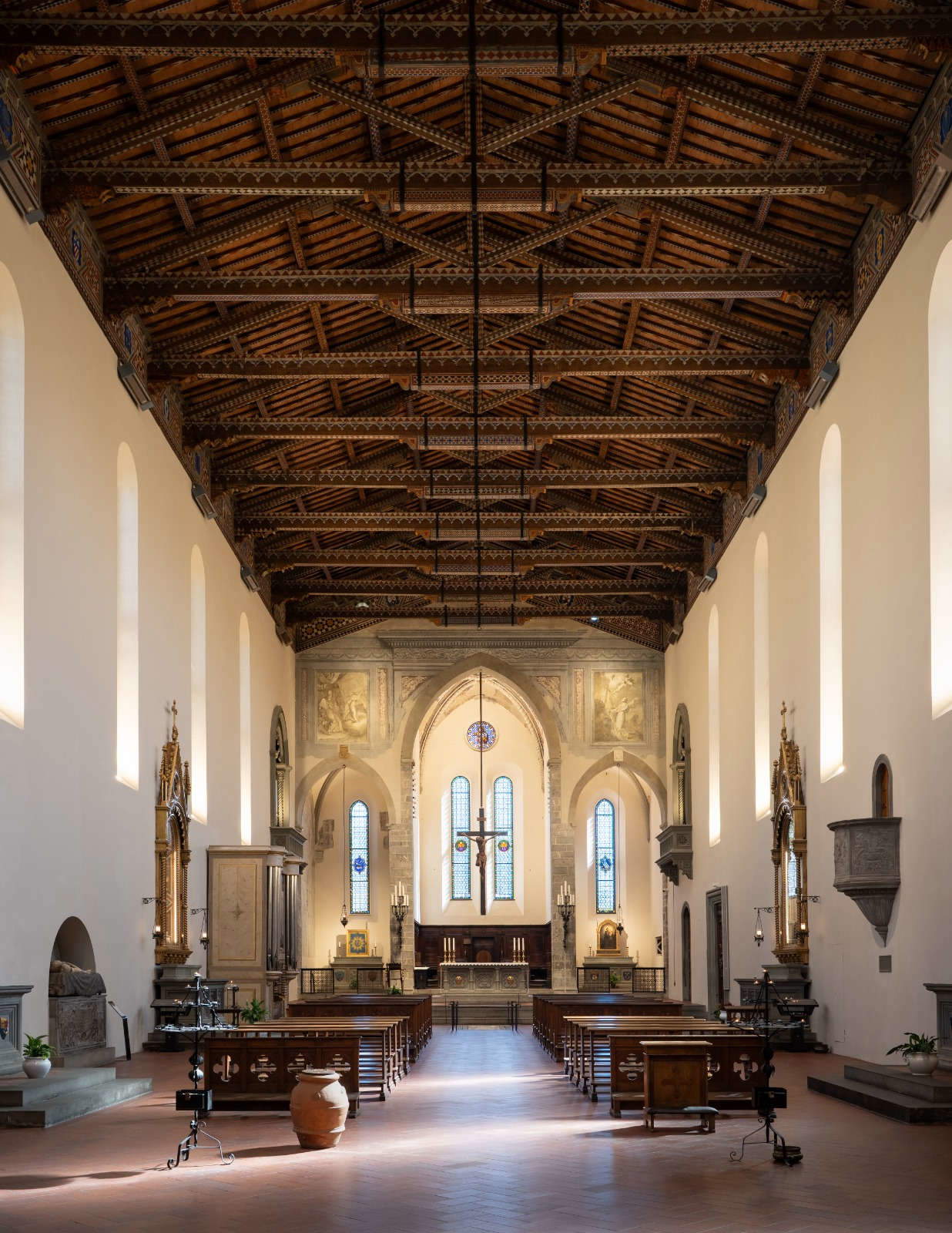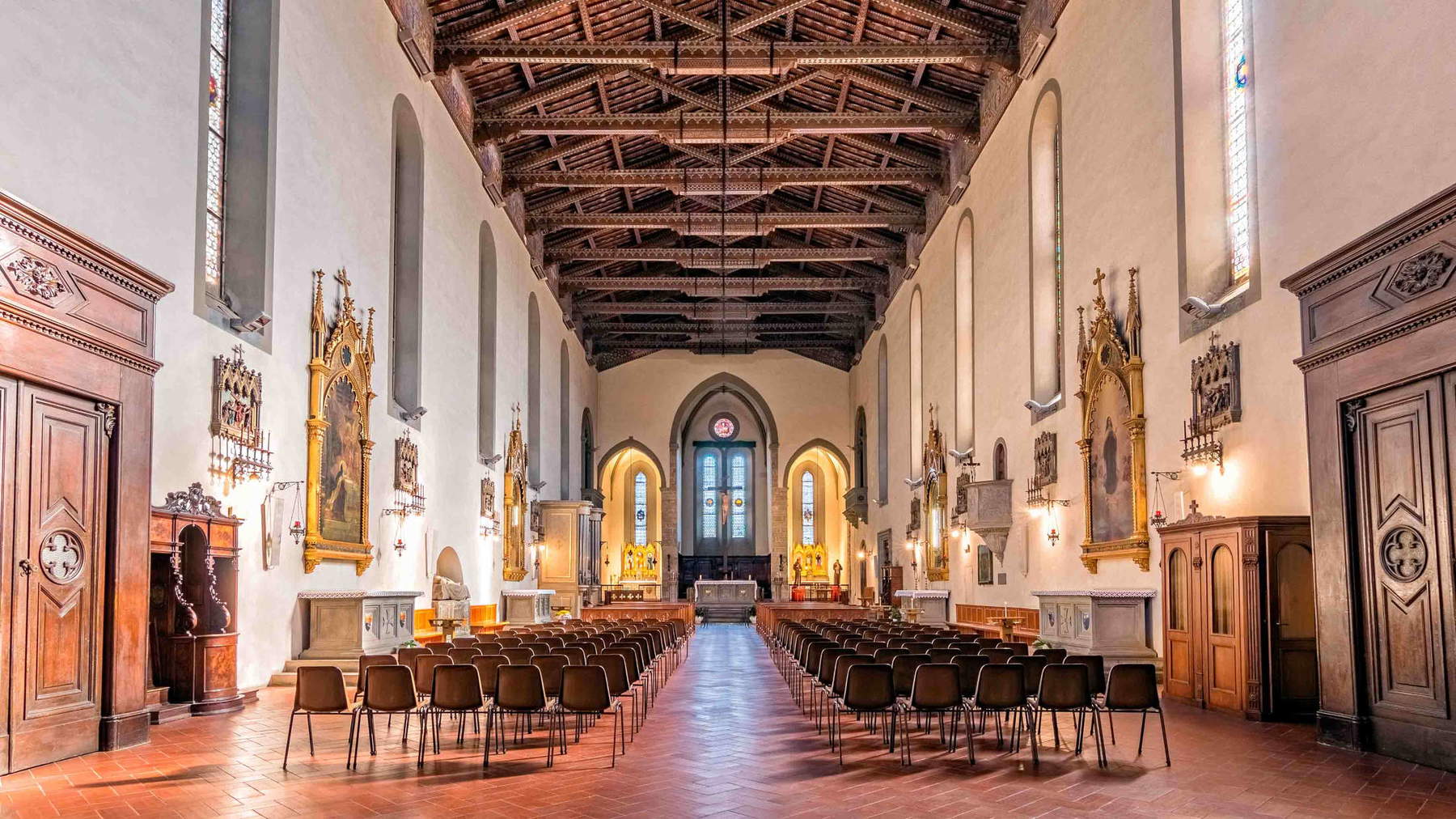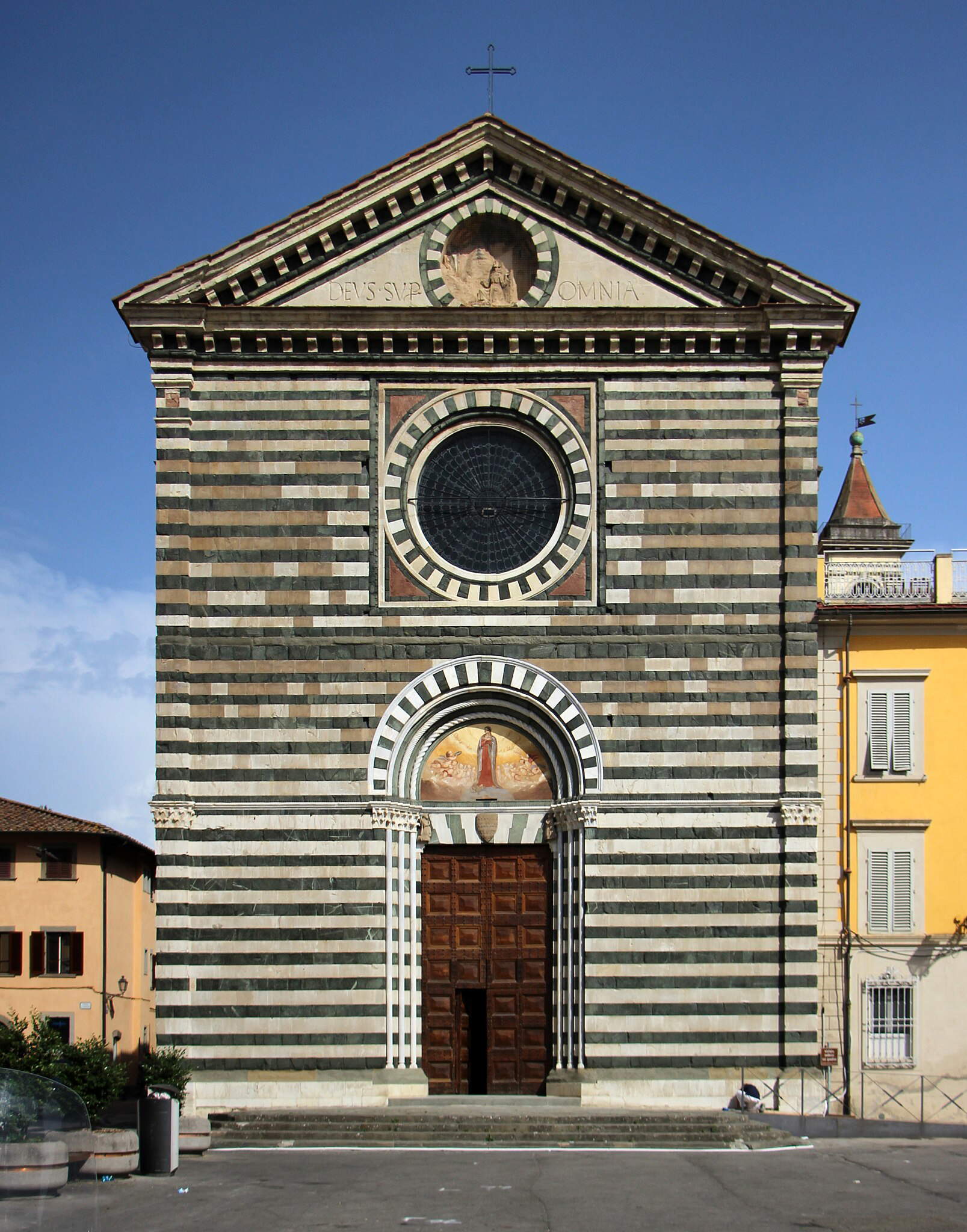The church of San Francesco in Prato, one of the first Franciscan churches in Italy, is once again opening its doors to all: in fact, the restoration that kept the building closed for seven years is over. The exceptionally complex and lengthy intervention was completed in autumn 2025 after years of study, research and work, bringing to light a building that represents one of the most significant symbols of the Tuscan city. The restoration marks the rebirth of a monument that has guarded Prato’s religious and civic memory for more than eight centuries and that now, thanks to a shared commitment between institutions, research organizations and the church community, is once again becoming a cultural and spiritual reference point.
The intervention, started in the summer of 2021, was preceded by a long preparatory process that began in 2018 with an articulated program of archival studies, historical surveys and diagnostic analysis. This multidisciplinary approach has allowed a more precise reconstruction of the building’s genesis and transformations over the centuries, restoring an authentic and scientifically grounded vision of its architectural and decorative heritage. The result is a new and comprehensive reading of the Franciscan complex, integrating historical knowledge, technological innovation and conservation sensitivity.

The project, significantly named The Great Restoration of San Francesco, was promoted by the Parish of San Donato in San Francesco, represented by Monsignor Carlo Stancari, who was the client. The design and direction of the work was entrusted to a group of professionals coordinated by architect Riccardo Berti, with Francesco Marchese as project manager for the Parish. SPIRA s.r.l. with architect Sara Marrani, engineer Riccardo Papi and engineer Silvio Spadi took part, joined by the CNR Institute for BioEconomy, in charge of the study and dating of the wooden structures, and the University of Florence for the analysis of the wall surfaces. Industrial expert Federico Innocenti for the electrical system and architect Stefania Galanti of Targetti Sankey for lighting design also contributed to the project.
The work was conducted under the high supervision of the ABAP Superintendency for the Metropolitan City of Florence and the Province of Prato, with crucial contributions from figures such as architect Gabriele Nannetti, architect Giuseppina Clausi, Dr. Lia Brunori, Dr. Francesca Leolini, and Dr. Silvia Benassai. The firms involved include Mannucci Geom. Vinicio S.r.l. for the architectural restoration, restorers Letizia Langianni and Desirè Maddalena for the Datini Altar frescoes, Progetto Arte Poli S.r.l. for the stained glass windows, C.S.C. Automazioni for the systems, Targetti Sankey for the lighting supply and O.M.E.R.T. S.n.c. for the metal structures. The Datini Altar installation was designed by architect Davide Marazzi of Marazzi Architetti studio in Parma and executed by Freak Out! S.n.c.
The restoration was developed in several successive lots, managed in a coordinated manner to respond to the complexity of the operations and the need to ensure the economic sustainability of the project. All activities were carried out in agreement with the Cultural Heritage Office of the Diocese of Prato, directed until 2024 by Don Renzo Fantappiè and today by Monsignor Daniele Scaccini, with the collaboration of engineer Renza Renzi. The total economic commitment reached about 2.4 million euros, 70 percent of which was covered by the contribution of the Italian Episcopal Conference through the 8x1000 funds to the Catholic Church, while the remainder was supported by the parish and contributions from private individuals and the Fondazione Cassa di Risparmio di Prato. The solidarity mechanism of the 8x1000 has proved to be decisive for the protection and enhancement of ecclesiastical property, making possible a long-term intervention that restores value to the community and the national artistic heritage.
The operational phases of the Great Restoration took place between 2018 and 2025. After the study and design phase, the first lot (2021-2022) involved the main facade and stained glass windows, with the reopening of theDatini Altar niche. The second lot (2022-2023) involved the apsidal area and the roofs, while lots three through five, between 2023 and 2025, involved the entire church hall, the decorated wooden structures and the interior surfaces, with the implementation of a new lighting system. The lighting system, designed to enhance the works and optimize energy use, now allows for an evocative and functional enjoyment of the sacred space.


During the work, the construction site revealeddiscoveries of extraordinary historical and artistic value. Among them was the discovery of the original niche of the Datini Crucifix Altar, built in 1383 at the behest of merchant Francesco di Marco Datini, a symbolic figure of medieval Prato. The altar, concealed by a curtain wall for more than three centuries, has re-emerged intact, with a cycle of frescoes by painter Pier Antonio Michi dating back to 1635 and a canvas depicting saints and benefactors associated with the church. The work, returned to the church after a 99-year loan with the Museum of Palazzo Pretorio, thus recomposes the original unity of the complex, a rare example of collaboration between civil, religious and museum institutions.
Other discoveries have enriched the building’s cognitive framework: thirteenth-century decorations on the wooden trusses, fragments of medieval and Renaissance frescoes in the Main Chapel, a late Baroque pictorial complex with scenes of St. Francis, and a stucco sculpture attributed to Donatello’s sphere. The restoration also made it possible to rediscover the decoration of the Angiolini Chapel, to fully restore the stained glass windows, and to recover the stone and decorative elements that testify to the church’s artistic stratification.
To celebrate the completion of the work, the Church of St. Francis will host three events. On Nov. 13, 2025, there will be a concert of Claudio Monteverdi’s “Vespers of the Blessed Virgin” by the “Beatus Vir” ensemble conducted by Filippo Bressan. On Nov. 15, the restoration will be presented to the public with a conference attended by designers, Superintendence, Parish and Cultural Heritage Office. Finally, on Nov. 16, Monsignor Giovanni Nerbini, bishop of Prato, will preside over the solemn inaugural Eucharistic celebration, flanked by religious from the Orders that have guarded the church over the centuries.
The completion of the restoration opens a new phase in the life of the St. Francis complex, which once again becomes a place of worship and at the same time a space of collective knowledge and memory. In view of the celebrations for the eighth centenary of the death of St. Francis of Assisi and for the eight hundred years since the founding of the church, scheduled for 2028, the city of Prato looks to the future with a monument restored to its integrity and with an enhancement project that will also extend to the publication of a monograph dedicated to the entire complex. The Great Restoration of San Francesco not only returns an architectural and spiritual masterpiece to the community, but also becomes an example of virtuous cooperation between research, faith and heritage protection, projecting Prato into a cultural dimension that belongs to the whole of Italy.
 |
| Prato, St. Francis church restoration completed, reopening after seven years |
Warning: the translation into English of the original Italian article was created using automatic tools. We undertake to review all articles, but we do not guarantee the total absence of inaccuracies in the translation due to the program. You can find the original by clicking on the ITA button. If you find any mistake,please contact us.